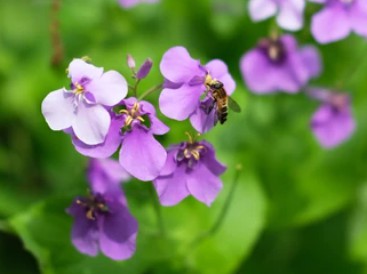Orychophragmus violaceus, an annual or biennial herbaceous plant of Brassicaceae, has better ornamental value and is widely used in parks, forest margins, city streets, green belts on both sides of highways or railroads, and is rich in nutrients, easy to grow, easy to harvest, and high in yield. In addition to its good ornamental value, it is also a vegetable and oil plant, and its seed oil is rich in nutrients, which is ideal for high-quality edible oil, so the research on Orychophragmus violaceus has also attracted more and more attention from scientists.
Lifeasible is characterized by an efficient and abundant plant genetic transformation system. After years of experimental research on plant genetic transformation, we have screened the best transformation conditions for Orychophragmus violaceus, and we have rich experience in the genetic transformation of Orychophragmus violaceus, with high transformation efficiency, which can guarantee the success rate of the experiment to a great extent. In plant genetic transformation research, we can provide large-scale, standardized transgenic technology services for wild-type varieties and undertake transgenic mutants.

In our genetic transformation of Orychophragmus violaceus, we usually select Orychophragmus violaceus hypocotyls as the explants and establish a high-frequency regeneration system for Orychophragmus violaceus tissue culture hypocotyls. They are then infected with Agrobacterium rhizogenes or Agrobacterium rhizogenes carrying the desired DNA constructs. The Agrobacterium-mediated transformation process we offer involves several steps. First, the explants are exposed to a suspension of Agrobacterium cells containing a binary vector for the gene of interest. The binary vector typically contains selective marker genes, such as antibiotic or herbicide resistance genes, for efficient identification and selection of transformed cells. In addition, it contains genes responsible for desired traits that may be associated with enhanced agronomic traits, resistance, or improved product quality. Upon infection, Agrobacterium transfers the T-DNA region of the binary vector into the plant cells. The T-DNA is integrated into the plant genome, and subsequent tissue culture techniques, including healing tissue induction, shoot regeneration, and rooting, are employed to produce intact plants with integrated exogenous DNA. In the genetic transformation of Orychophragmus violaceus, we obtained some important factors affecting its genetic transformation through repeated experiments, such as the effect of exoskeleton, kamikaze screening concentration, mycorrhizal infection time, mycorrhizal concentration, pre-cultivation, co-cultivation time, and the selection of antibiotics of transformed seedling repressor on the transformation and regeneration of Orychophragmus violaceus transformation and regeneration. We established a genetic transformation system using Orychophragmus violaceus hypocotyl as the recipient.
We often encounter customers who take a long time to construct transformation vectors by themselves, or there are frequent errors and omissions, which affects the project's progress. To minimize such delays, it is recommended to entrust us to complete the gene cloning and vector construction, which saves time and ensures a nearly 100% success rate and good results.

Lifeasible is committed to providing reliable plant genetic transformation research services. Based on our well-established and advanced plant transformation platform, we have paved the way for a wide range of plant genetic transformation research, which has dramatically facilitated plant genetic transformation research. If you are interested in us, please feel free to contact us.